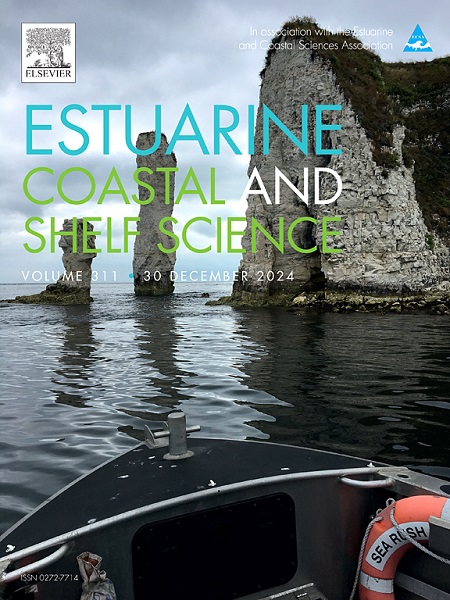Fisheries bycatch threatens sessile communities of the Great Amazon Reef System
IF 2.6
3区 地球科学
Q1 MARINE & FRESHWATER BIOLOGY
引用次数: 0
Abstract
The Great Amazon Reef System (GARS) is an ecosystem amid major economic and environmental disagreements. Besides the eminent threats from oil and gas exploration in its surroundings, the reefs are also exposed to intense fishing pressure, including destructive practices such as bottom gillnetting and trawling. We assessed the richness of benthic sessile invertebrates (Cnidaria and Porifera) and associated taxa (Echinodermata) to report the impacts from fisheries bycatch on the GARS. A taxonomic survey was carried out based on photographic records and notes (dates and geographic coordinates) made by onboard observers at more than 200 stations sampled over approximately 42.000 km2. The photographic records were made from invertebrates incidentally collected through four fishing gears: bottom trawling, shrimp trawling, bottom gillnet (“rede de caçoeira”), and pit trap (“manzuá”). These gears were used to sample 209 fishing stations, including benthic invertebrates as bycatch. We also assessed literature records on the distribution of benthic invertebrates to check for overlaps between reef benthic communities and fishing effort. A total of 54 species were recorded as bycatch. Richness was highest for the Phylum Echinodermata. Among the structuring taxa, Cnidaria was the richest, with the Class Anthozoa represented mainly by scleractinian corals (seven species, 24 stations) and gorgonians (seven species, 26 stations), whereas hydrozoans were more frequent (five species, 50 stations). The distribution of the hydrocoral Stylaster roseus was extended to the north. Porifera had 16 species and were dominated by the class Demospongiae in 8 Orders. We show here that gillnet and trawling fisheries pose significant threats to reef integrity by removing sessile key species as bycatch. Fishery pressures on GARS are mainly concentrated in the areas where habitat-forming species occur, thus threatening a broad diversity of benthic reef organisms. Corals and sponges are selectively impacted by traps and gillnets. In the long term, fisheries bycatch may impose profound disturbances to benthic reef communities and decline fishery yields. Our results reinforce the urgent need for a systematic conservation approach to reconcile extractive activities with conservation goals.
求助全文
约1分钟内获得全文
求助全文
来源期刊
CiteScore
5.60
自引率
7.10%
发文量
374
审稿时长
9 months
期刊介绍:
Estuarine, Coastal and Shelf Science is an international multidisciplinary journal devoted to the analysis of saline water phenomena ranging from the outer edge of the continental shelf to the upper limits of the tidal zone. The journal provides a unique forum, unifying the multidisciplinary approaches to the study of the oceanography of estuaries, coastal zones, and continental shelf seas. It features original research papers, review papers and short communications treating such disciplines as zoology, botany, geology, sedimentology, physical oceanography.

 求助内容:
求助内容: 应助结果提醒方式:
应助结果提醒方式:


